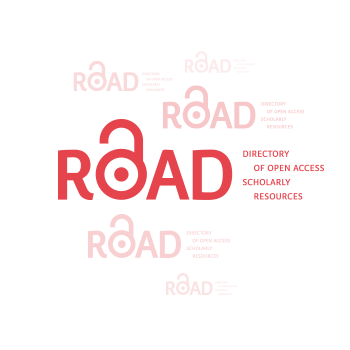Evaluación de la Eficacia de los Ejercicios de Risser en Pacientes con Diagnóstico de Pie Plano
Resumen
El pie plano se define como la reducción parcial o total del arco longitudinal medio plantar. El objetivo fue evaluar la eficacia de los ejercicios de Risser para aumentar el arco medial del pie plano. método: el estudio es cuasiexperimental donde se manipula la variable independiente que es el factor protector (terapia de Risser), el diseño de los procedimientos de intervención de los ejercicios de Risser fue de 10 sesiones, 3 veces a la semana, con una duración de 10 repeticiones por ejercicio y el análisis estadístico se realizará mediante el software estadístico SPSS en su versión 29.0.0.0, la pruebas que se aplicarán son: la prueba de normalidad, como es una población menor a 50 datos se usa Shapiro-Wilk y la T de Student para muestras relacionadas, comparando la medición inicial de arco de pie derecho e izquierdo, con la medición final de ambos pies. Resultados: Existe una diferencia significativa de medias entre la medición de ambos pies, para el pie derecho es más amplia antes de iniciar la intervención es de 2.5629 cm después de 47.0600 cm (diferencia 14.4971). Conclusión: se recomienda los ejercicios de Risser para aumentar el porcentaje del arco medial del pie en adultos.
Descargas
Citas
Brijwasi, T., & Borkar, P. (2023). A comprehensive exercise program improves foot alignment in people with flexible flat foot: a randomised trial. Journal of physiotherapy, 69(1), 42–46.
https://doi.org/10.1016/j.jphys.2022.11.011
Castañeda Gonzales, J. L. (2023). Plan estratégico para la toma de decisiones en la municipalidad provincial de Chiclayo. Revista Científica Pakamuros, 9(1). https://doi.org/10.37787/dt8k4849
Coll Bosch, M.D., Viladot Perice A., Suso Vergara A. (1999). Estudio evolutivo del pie plano infantil. Revista Española de Cirugía Ortopédica y Traumatología, 43(3),213-220.
Evans, A. M., Rome, K., Carroll, M., & Hawke, F. (2022). Foot orthoses for treating paediatric flat feet. The Cochrane database of systematic reviews, 1(1), CD006311.
https://doi.org/10.1002/14651858.CD006311.pub3
Galindez Flores, R.L. (2020). Efectividad del ejercicio risser en pie plano de niños 4 a 6 años hospital regional docente clínico-quirúrgico Daniel Alcides Carrión. Universidad Peruana Cayetano Heredia..
Hara, S., Kitano, M., & Kudo, S. (2023). The effects of short foot exercises to treat flat foot deformity: A systematic review. Journal of back and musculoskeletal rehabilitation, 36(1), 21–33. https://doi.org/10.3233/BMR-210374
Harris, E. J., Vanore, J. V., Thomas, J. L., Kravitz, S. R., Mendelson, S. A., Mendicino, R. W., Silvani, S. H., Gassen, S. C., & Clinical Practice Guideline Pediatric Flatfoot Panel of the American College of Foot and Ankle Surgeons (2004). Diagnosis and treatment of pediatric flatfoot. The Journal of foot and ankle surgery : official publication of the American College of Foot and Ankle Surgeons, 43(6), 341–373. https://doi.org/10.1053/j.jfas.2004.09.013
Huang, C., Chen, L. Y., Liao, Y. H., Masodsai, K., & Lin, Y. Y. (2022). Effects of the Short-Foot Exercise on Foot Alignment and Muscle Hypertrophy in Flatfoot Individuals: A Meta-Analysis. International journal of environmental research and public health, 19(19), 11994. https://doi.org/10.3390/ijerph191911994
Kodithuwakku Arachchige, S. N. K., Chander, H., & Knight, A. (2019). Flatfeet: Biomechanical implications, assessment and management. Foot (Edinburgh, Scotland), 38, 81–85. https://doi.org/10.1016/j.foot.2019.02.004
Larrosa Padróa, M., Mas Moliné, S. (2003). Alteraciones de la bóveda plantar. Revista Española de Reumatología, 30(9), 489-498. https://www.elsevier.es/en-revista-revista-espanola-reumatologia-29-articulo-alteraciones-boveda-plantar-13055069
Martínez Lozano, A.G. (2009). Pie plano en la infancia y adolescencia. Conceptos actuales. Revista Mexicana de Ortopedia Pediátrica,11(1),5-13.
https://www.medigraphic.com/pdfs/opediatria/op-2009/op091b.pdf
Miller S. J. (1987). End-stage flatfoot. Diagnosis and conservative and surgical management. Journal of the American Podiatric Medical Association, 77(1), 42–45.
https://doi.org/10.7547/87507315-77-1-42
Myerson, M. S., Thordarson, D. B., Johnson, J. E., Hintermann, B., Sangeorzan, B. J., Deland, J. T., Schon, L. C., Ellis, S. J., & de Cesar Netto, C. (2020). Classification and Nomenclature: Progressive Collapsing Foot Deformity. Foot & ankle international, 41(10), 1271–1276. https://doi.org/10.1177/1071100720950722
Parra García, J.I., & Bueno Sánchez, A. (2011). El pie plano: las recomendaciones del traumatólogo infantil al pediatra. Pediatría Atención Primaria, 13(49), 113-125.
http://scielo.isciii.es/scielo.php?script=sci_arttext&pid=S1139-76322011000100012&lng=es&tlng=es.
Toullec, E. (2015). Adult flatfoot. Orthopaedics & traumatology, surgery & research :OTSR, 101(1 Suppl), S11–S17. https://doi.org/10.1016/j.otsr.2014.07.030
Ueki, Y., Sakuma, E., & Wada, I. (2019). Pathology and management of flexible flat foot in children. Journal of orthopaedic science : official journal of the Japanese Orthopaedic Association, 24(1), 9–13. https://doi.org/10.1016/j.jos.2018.09.018
Unver, B., Erdem, E. U., & Akbas, E. (2019). Effects of Short-Foot Exercises on Foot Posture, Pain, Disability, and Plantar Pressure in Pes Planus. Journal of sport rehabilitation, 29(4), 436–440. https://doi.org/10.1123/jsr.2018-0363
Van Boerum, D. H., & Sangeorzan, B. J. (2003). Biomechanics and pathophysiology of flat foot. Foot and ankle clinics, 8(3), 419–430. https://doi.org/10.1016/s1083-7515(03)00084-6
Wang, Y. T., Chen, J. C., & Lin, Y. S. (2020). Effects of Artificial Texture Insoles and Foot Arches on Improving Arch Collapse in Flat Feet. Sensors (Basel, Switzerland), 20(13), 3667. https://doi.org/10.3390/s20133667
Yurt, Y., Şener, G., & Yakut, Y. (2019). The effect of different foot orthoses on pain and health related quality of life in painful flexible flat foot: a randomized controlled trial. European journal of physical and rehabilitation medicine, 55(1), 95–102.
https://doi.org/10.23736/S1973-9087.18.05108-0
Zatti, G., Ferrari, A., & Surace, M. F. (2001). Peritalar release in the treatment of congenital talipes equinovarus clubfoot. La Chirurgia degli organi di movimento, 86(4), 269–279.
Derechos de autor 2024 Miguel Alberto Gutiérrez Nava , Ana Lilia González Santiago, Irma García Moreno, Nallely García García, Ángel de la Cruz Bustos , Michell Serafin Badillo, Karina Martínez Cárdenas, Rosa Estela López Gómez

Esta obra está bajo licencia internacional Creative Commons Reconocimiento 4.0.












.png)




















.png)
1.png)


